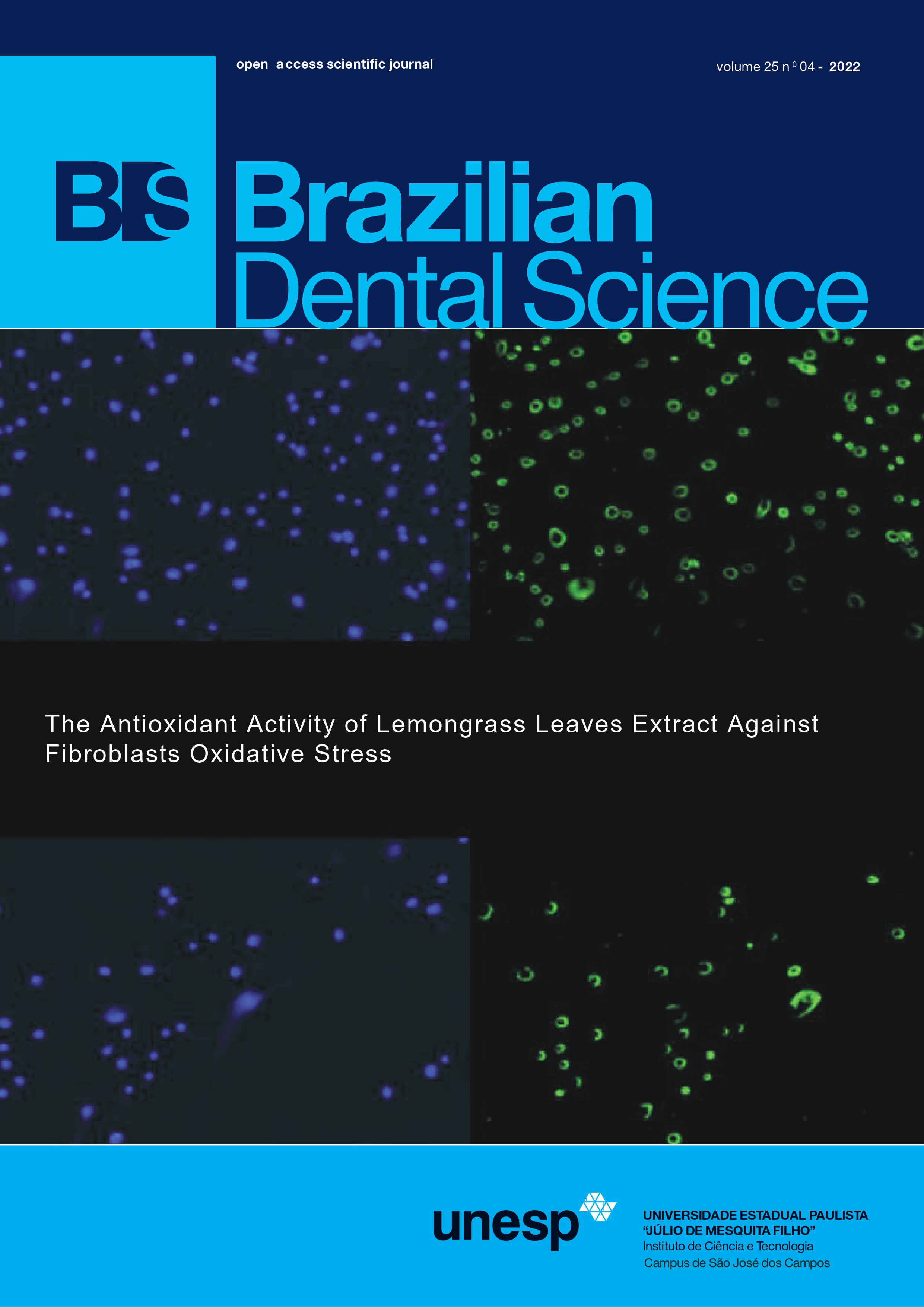Posterior rehabilitation using 3D-printed dental implants and synthetic regenerative membranes
DOI:
https://doi.org/10.4322/bds.2022.e3572Abstract
Aim: To describe through a clinical case report the surgical sequence of rehabilitation with 3D-printed implants
associated with maxillary sinus floor lift with synthetic regenerative materials, including biphasic bioceramic.
Case Report: Patient had an agenesis of the upper left premolars (#12 and #13), a vertical bone deficiency
caused by maxillary sinus’ pneumatization, and a horizontal alveolar resorption around the missing teeth area.
During the surgical procedures, incisions, detachment, and osteotomy were performed in the lateral region of
the maxillary sinus. The sinus membrane was detached and lifted 10 mm. Then, a thick poly(dioxanone)-based
synthetic resorbable membrane (Plenum) was inserted and adapted inside the sinus to protect the sinus membrane.
After the osteotomies with sub-instrumentation, 3D-printed implants (Plenum) were installed in the #12 area
(3.5mm x 11.5 mm; 30N) and #13 area (4.0mm x 10mm; 20N). The maxillary sinus was entirely filled with a
biphasic bioceramic,HA/B-TCP (70:30) 500-1000 um (Plenum) and covered by the same synthetic resorbable
membrane. Connective tissue graft from the palatal area was positioned internally to the flap and stabilized with
sutures to improve the vestibular tissue architecture. The entire surgical wound was sutured, and the tissues
stabilized. No complications occurred in the postoperative period. Conclusion: The use of synthetic regenerative
memberane and 3D-printed implants seems to be a promising option in areas of deficient bone remnants.
KEYWORDS
Dental Implants; 3D Printing; Maxillary Sinus; Sinus Floor Augmentations; Tissue Grafting.
Downloads
Downloads
Published
How to Cite
Issue
Section
License
Brazilian Dental Science uses the Creative Commons (CC-BY 4.0) license, thus preserving the integrity of articles in an open access environment. The journal allows the author to retain publishing rights without restrictions.
=================




























